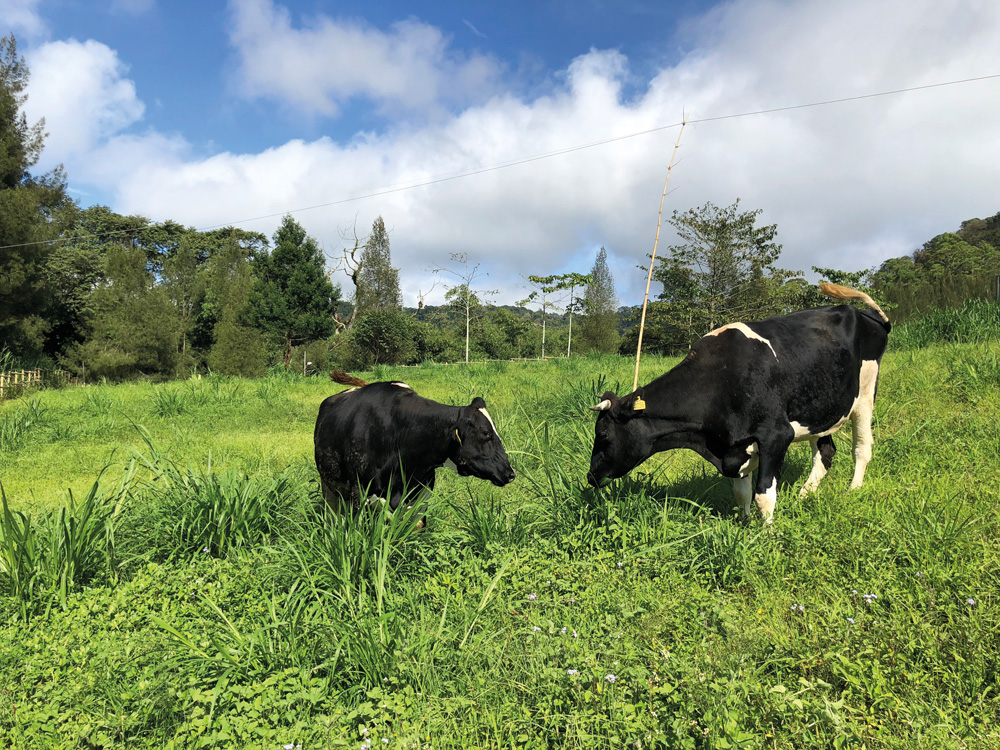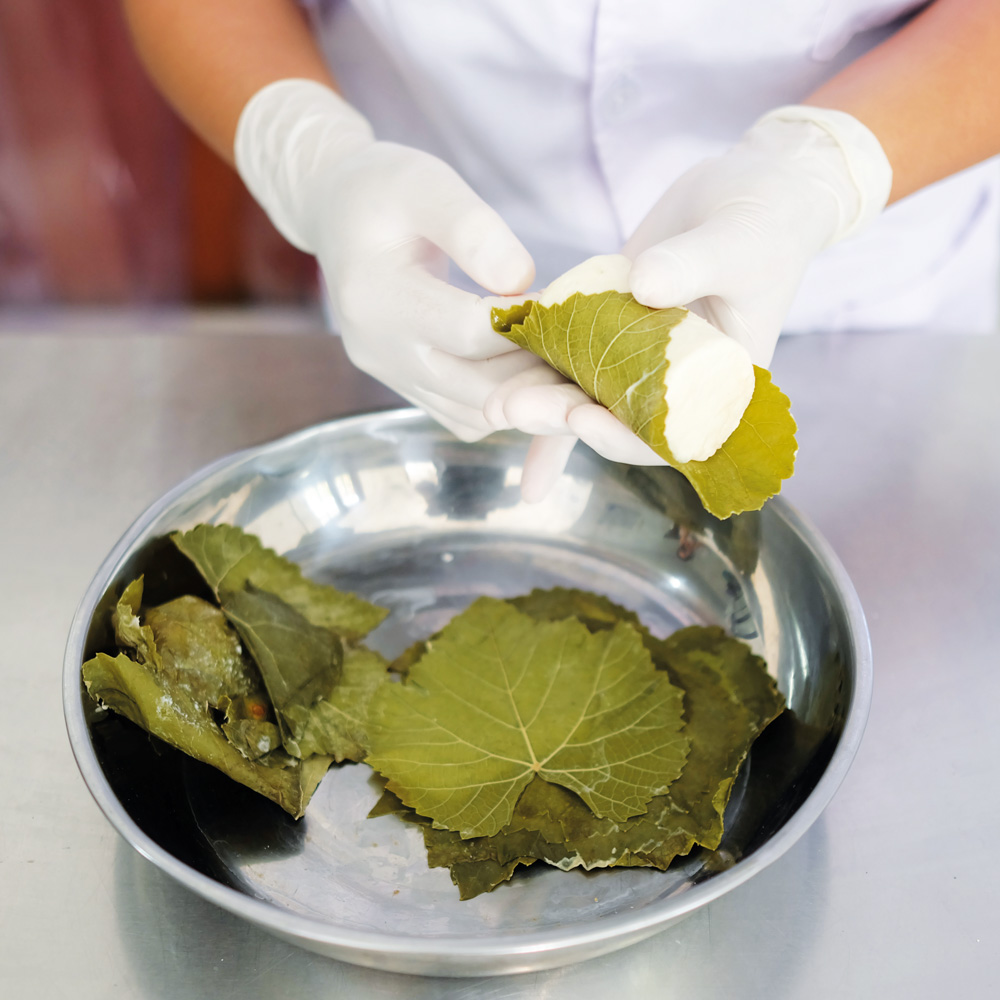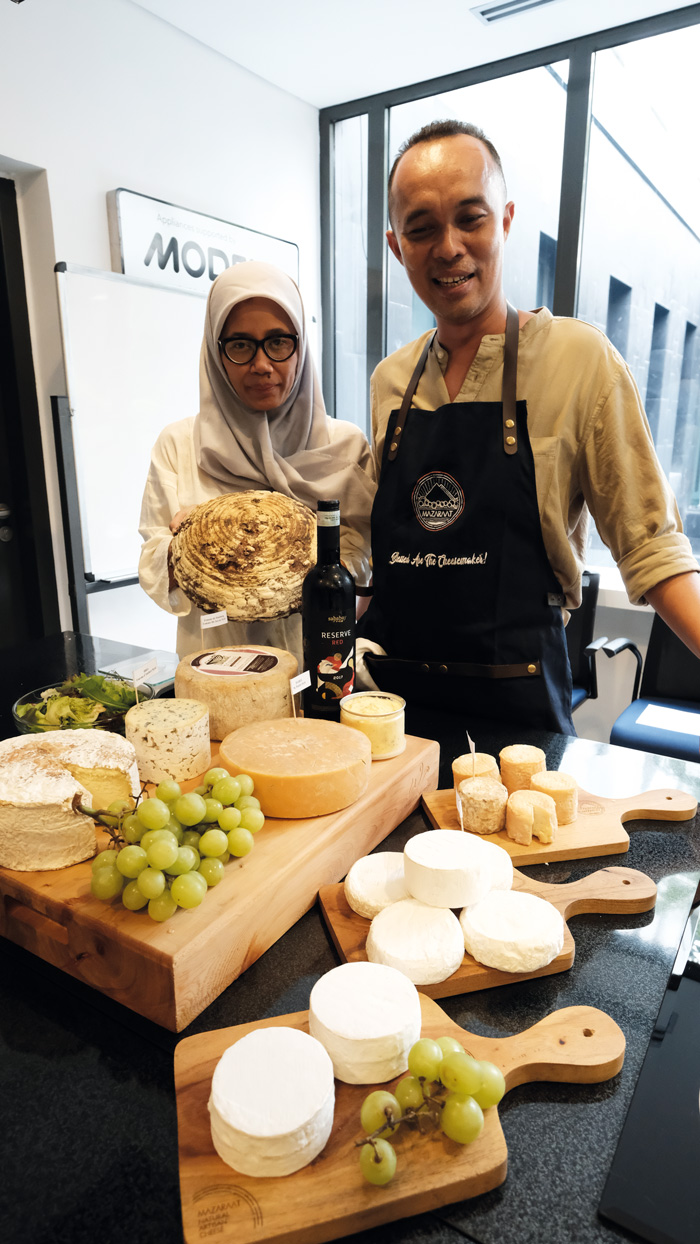From Sumatra to Bali, Eve Tedja uncovers a thriving artisan cheesemaking scene in Indonesia and talks to chefs who champion locally made cheese at their restaurants.

A s a popular weekend destination, Berastagi offers a picturesque escape, just 66 kilometers south of Medan, the capital of North Sumatra. Located 1,300 metres above sea level, it is refreshingly chilly. Two volcanoes, Mount Sibayak and Mount Sinabung, which constitute Indonesia’s longest mountain range Bukit Barisan, loom over Berastagi. Its soil is rich, allowing farming and agriculture to flourish. Black and white Holstein Friesian cows graze on its green pastures, especially on the ground that belongs to Gundaling Farmstead Berastagi.
Founded in 2005, the farmstead started humbly with just 20 cows which were purposefully raised to yield fertiliser. Milk was just the secondary product. However, the cows proved to be more beneficial as milk producers and the farm decided to focus on producing high quality milk and yoghurt. “The turning point was in 2014. Fresh milk and yoghurt started to get more popular and suddenly there was a demand for both products. Our presence became known to the public and we received visitors from all over Indonesia who wanted to see our farm and buy fresh milk and yoghurt. We became a destination in Berastagi,” explains Andreas Kangga Lee, co-founder of Gundaling Farmstead Berastagi. Now, as the owner of 100 dairy cattle, (which are able to produce more than 2,000 litres of fresh milk daily) Lee provides employment for 60 staff. In 2017 he decided to venture into cheesemaking.

After a course with Mazaraat Cheese, Lee started to produce a line of French and Italian cheese. At its dedicated ageing room, stacks of Provolone and Tomme wheels are maturing, while the curvaceous Caciocavallo hangs over them. He has created his own signature, the Tomme Andaliman, which infuses the semi-soft cheese with local’s tongue numbing, citrus-y pepper. “This year, we aim to expand our cheese production range, build a restaurant to showcase our farm-to-table products and hopefully, go regional since there is a huge demand in Southeast Asia for high quality artisanal cheese products,” says the Berastagi-native entrepreneur.
Lee is not alone in believing that there is a huge potential of high quality cheese products in Indonesia and Southeast Asia. Despite the fact that cheese is not a staple in Indonesian households, it has gained popularity among the country’s burgeoning middle class whose palates have become attuned to western cuisine. According to Statista, a market data provider, Indonesia’s cheese market is expected to grow by 8.5 percent in the next three years. In a country with a population of 265 million people, Indonesians' buying power is not one to be taken lightly. At the moment, Bali absorbs most of the artisanal cheese products in Indonesia. However, demand for natural and unprocessed cheese is also coming from Jakarta’s gourmet and hospitality market.

The history of Indonesia’s cheesemaking can be traced back to its diverse indigenous food culture. According to Jamie Najmi of Mazaraat Cheese in Yogyakarta, the art of cheesemaking has been known in Sumatra and Sulawesi. “There’s Dadih, traditional soft cheese from buffalo milk in West Sumatra. In North Sumatra, we have Dali Ni Horbo, a clabbering ricotta-like cheese made with pineapple or papaya leaf juice. We even have our own halloumi, Dangke, from Enrekang, South Sulawesi,” says Najmi. This selftaught artisan cheesemaker grew up eating Dadih in his hometown, Padang and it sparked his interest to pursue cheesemaking in Canada and New Zealand. When he returned to Yogyakarta in 2015, he started Mazaraat Cheese with an intention to create cheese from organically raised cows. He worked closely with an organic dairy cattle farm near Mount Merapi and receives a daily fresh milk supply of 300 litres. The limited quantity of milk prevents him to expand the production but allows him to pursue his passion in sharing, consulting and experimenting with cheese.

“By creating natural, unprocessed cheese from fresh milk, we empower local farmers and strengthen our food security. The definition of high quality cheese is the one that is made not more than 30 kilometres from its milk source and has never been frozen in its delivery. Indonesia still has a lot to catch up in regards to the quality of the milk and the process but we are getting there. With a dedication to quality, I dare say our locally produced cheese will be able to compete with imported products from Europe,” declares Najmi who produces halloumi, mozzarella, ghee and aged French cheeses such as Camembert, Tomme Merapi, blue cheese, and Brillat-Savarin.
As the awareness of prioritising locally made products increases, so too the demand for high quality natural cheese. At the moment, Indonesia already has more than 10 commercial cheesemakers. Most of them are based in Java and Bali, with each artisan creating different styles of cheese. The market potential even brought foreign investors to build their cheesemaking enterprises, such as the case with Bali Alm and PT Gioia Cheese Indonesia. Trading also proves to be a lucrative venture, as proven by Rosalie Cheese who not only produces goat cheeses but curate local cheese products at its retail and online marketplace. Undoubtedly, this is only the exciting beginning of what is to come. Can we say cheese?